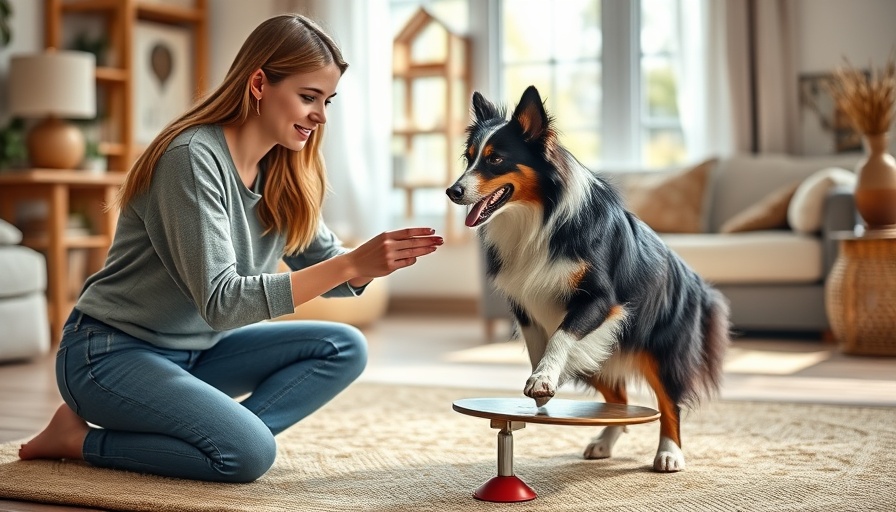
Ensuring Harmony: Kids and Pets Playing Together
When children and pets come together in play, it creates a delightful atmosphere filled with laughter and antics. However, as any pet owner knows, this joy can quickly turn into chaos if safety precautions are not taken. Supervising playtime is not just a good practice—it is essential for ensuring both kids and pets have positive and safe experiences.
The Importance of Supervision
One of the cardinal rules for kids and pets is that no young child should ever be left alone with an animal. Even pets that are notoriously gentle can react unpredictably if startled or overwhelmed. Imagine the heartwarming scene: your toddler is happily tossing a ball to your dog. Suddenly, they decide to tug on the dog's tail and shout excitedly. For most dogs, this abrupt situation can induce anxiety or even provoke growling. It is crucial to supervise these interactions closely, acting as both a translator and a safety officer. By watching their every move, you can intervene when necessary and ensure that playtime remains enjoyable for both ends of the leash.
Choose the Right Pet for Your Family Dynamics
Bringing a new pet into your home requires careful consideration, especially when little ones are involved. Not every pet thrives in a family environment, and not every child is ready for the responsibility of pet ownership. Before adopting, it’s important to inquire about the animal’s history. Have they been around children before? How do they react to loud noises or physical excitement? Understanding your pet’s temperament and history can help create a more harmonious household.
Teach Kids the Right Way to Interact with Pets
Your child’s education about pets should begin at a young age. Teaching them basic pet etiquette is not only beneficial for maintaining a safe atmosphere but also essential for fostering a loving relationship between them and their furry friends. Kids should learn to:
- Ask before petting: Whether it’s a dog or a cat, a friendly approach starts with asking. Teach children to wait for the pet to approach them rather than running or lunging towards them.
- Use soft hands: Discourage rough handling. Show children the importance of gentle strokes and interactions that reflect kindness.
- Recognize pet signals: Kids should be taught to identify common stress signals, such as hiding, growling, or even excessive tail wagging, which could indicate a mix of excitement and anxiety.
This foundational knowledge empowers children to create a respectful bond with pets and lets them enjoy their interactions without fear.
Create Safe Spaces for Everyone
Establishing defined safe zones for your pets is crucial. These spaces should contain the pet’s toys, comfortable resting spots, and areas where they can retreat to if they feel overwhelmed. When kids are playing nearby, they should be instructed to recognize these areas as 'off-limits' during play. Such actionable insights make it clear to kids where pets feel most at ease and encourage them to be mindful during interactions.
Recognizing Stress Signals
Every pet displays unique signs of discomfort or stress. A dog might growl softly, whine, or even retreat to a corner if the environment becomes too chaotic. Similarly, cats might hiss, swat, or hide when feeling overwhelmed. It’s imperative that children learn to recognize these cues. Understanding pet emotions fosters empathy and a deeper friendship.
The Benefits of Structured Supervision
While it may seem labor-intensive to supervise play at every moment, the rewards are immeasurable. Through support and guidance, you are teaching essential life skills to both your kids and pets. Kids learn empathy; pets feel secure, leading to stronger bonds that last a lifetime. These lessons ultimately create a nurturing environment where both children and pets thrive.
Wrapping Up Your Playtime Safety Strategy
Watching your kids bond with pets can be one of the most fulfilling experiences of family life. However, it is vital to be proactive about their safety. By supervising play, choosing the right pets, teaching kids proper interaction, creating safe zones, and recognizing stress signals, you can ensure that everyone enjoys joyful interactions free from fear. So, whether it’s playfully rolling around on the grass or lounging together with a book, let your home be a place where amazing memories are made safely!
Keep your loved ones safe and your family home as a happy place. Implement these tips today for a future filled with joy and laughter!
 Add Row
Add Row  Add
Add 




Write A Comment